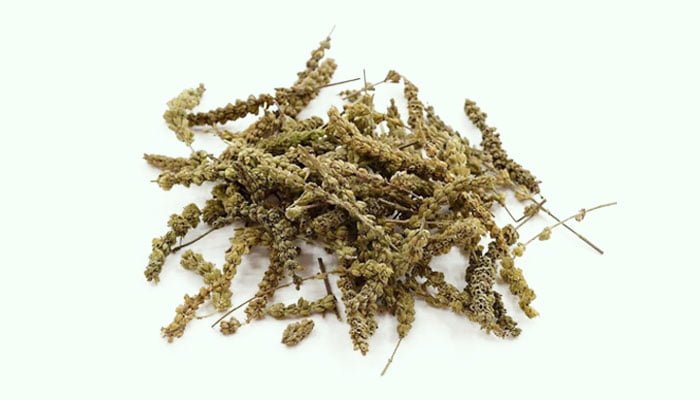What Is Jing Jie
Jing Jie is commonly known as Schizonepeta Tenuifolia, which is an annual herb belonging to the family Labiatae. It is a relatively practical and common Chinese herbal medicine, which first appeared in <Shennong Ben Cao Jing> in the late Western Han Dynasty (around 100 BCE).
There are 3 species in this genus, namely S. Tenuifolia, S. annua, and S. multifida. They are mainly distributed in temperate regions of East Asia.
S. Tenuifolia is a synonym of Nepeta tenuifolia. This plant likes a light and warm and humid environment. They grow well in fertile and loose sandy soil. They often grow on hillside roadsides, valleys, and forest edges at an altitude of 540-2,700 meters. They are distributed in China, South Korea, and Japan.

In summer and autumn, when Schizonepeta tenuifolia blooms, people gather their above-ground parts, remove impurities, dry them in the sun, cut them into sections, use them directly, or carbonize them, and make them into Chinese herbal medicines.
Jing Jie contains a lot of volatile oil, and its components include pulegone, menthone, isopulegol, L-menthone, isomenthone, DL-menthol, menthofuran, β-myrcene, β-pinene, limonene, verbenone, carvone, p-menth-1-en-3-one, chrysanthone, carveol, caryophyllene, aromadendrene, β-bourbonene, cadinene, benzaldehyde, syringaldehyde, 3-octanone, camphenilone, thymoquinone, thymol, palmitic acid, linolenic acid, monobutyl phthalate, α -asarone, and safrene.
In addition, it also contains tensiopress, phytol, ursolic acid, isopimaric acid, isodextropimarinol, apigenin, kaempferol, rutin, luteolin, genkwanin, diosmetin, quercitrin, hesperidin, chlorogenic acid, and β-sitosterol.
Generally, the green Jing Jie with thinner stems and a strong fragrance is preferred.
According to the Chinese Pharmacopoeia, the medicinal nature of Jing Jie is slightly warm, with a pungent taste. It has a certain therapeutic effect on pathological changes of lung and liver meridians.
In traditional Chinese medicine, it is often used to dispel wind and relieve exterior symptoms, promote eruptions and reduce sores, stop bleeding, and treat colds, headaches, dizziness, itchy throat, rubella, measles, early sores, acne, localized eczema, facial hormone-dependent dermatitis, solar dermatitis, flat warts, plantar warts, genital itching, hematochezia, hemorrhoids, metrorrhagia, vomiting blood, nosebleeds, postpartum blood halos, allergic purpura, allergic rhinitis, psoriasis, knee osteoarthritis, tetanus, and temporomandibular-joint disorder syndromes.
There are about 200 kinds of Chinese medicine prescriptions containing it, such as Chuan Xiong Tea Tiao Wan, Yin Qiao San, and Fang Feng Tong Sheng Wan.
Benefits
- Anti-inflammation, inhibiting xylene-induced ear swelling in mice and carrageenan-induced foot swelling in mice.
- Increasing the pain threshold and inhibiting the pain caused by the hot plate experiment.
- Anti-oxidation, scavenging DPPH free radicals, and superoxide anion free radicals.
- Inhibiting H1N1 virus, respiratory syncytial virus, herpes simplex virus, norovirus, Enterovirus 71.
- Reducing liver damage caused by acetaminophen and protecting the liver.
- Stimulating the external blood coagulation system of mice, activating the fibrinogen system, and shortening the bleeding time.
- Inhibiting platelet aggregation and granule secretion, prevent thrombosis[1].
- Relaxing the smooth muscles of the trachea and relieving the bronchospasm caused by acetylcholine or histamine.
- Relieving exterior symptoms and treating fever and headache caused by wind-cold or wind-heat.
- Promoting eruptions, and treating the insufficient outbreak of measles, and rubella itching.
- Treating early sores accompanied by an exterior syndrome of wind-cold or wind-heat.
- Regulating blood condition and stopping bleeding, treating vomiting blood, nosebleeds, blood in the stool, and metrorrhagia caused by blood heat.
- Its volatile oil can inhibit the proliferation of lung cancer A549 cell line and induce its apoptosis.
- Its volatile oil has certain inhibitory effects on Staphylococcus aureus, Escherichia coli, Bacillus subtilis, yeast, Aspergillus flavus, Trichoderma viride, Pseudomonas aeruginosa, and Candida albicans.
- Studies have found that its ethanol extract can improve the bone loss of lipopolysaccharide-induced bone destruction model mice, and can block the formation of filamentous actin loops of mature osteoclasts in vitro.
Combinations
- It can be used in combination with Fang Feng (Radix Saposhnikoviae), Qiang Huo (Rhizoma et Radix Notopterygii), Du Huo (Radix Angelicae Pubescentis), etc. to treat fever, aversion to cold, headache, and anhidrosis caused by wind-cold.
- It can be used in combination with Jin Yin Hua (Flos Lonicerae), Lian Qiao (Fructus Forsythiae), Bo He (Mentha), etc. to treat fever and headache caused by wind-heat.
- It can be used in combination with Chan Tui (Periostracum Cicadae), Bo He (Mentha), Zi Cao (Radix Arnebiae), etc. to treat the insufficient outbreak of measles.
- It can be used in combination with Sheng Di Huang (Radix Rehmanniae), Bai Mao Cen (Rhizoma Imperatae), Ce Bai Ye (Cacumen Platycladi), etc. to treat vomiting blood and nose bleeding caused by blood heat.
- It can be used in combination with Di Yu (Radix Sanguisorbae), Huai Jiao (Fructus Sophorae), Huang Qin (Radix Scutellariae), etc. to treat blood in the stool and hemorrhoid bleeding caused by blood heat.
Side Effects
- At present, no data is showing that Jing Jie has toxic effects.
- Taking it for a long time may cause thirst.
- Individual patients taking it may cause allergic reactions such as general itching, skin flushing, chest tightness, or irritability.
Precautions and Warnings
- The dosage of Jing Jie should be controlled at 5-10g.
- It can be made into decoctions, pills, or ground for external use.
- It contains a lot of volatile oil and is not suitable for long decoction.
- Carbonized Jing Jie should not be used with lactase.
- Avoid eating pufferfish, donkey meat, yellow croaker, or crab during the medicine.
- People who are allergic to Nepeta should not take it.
- People with spontaneous sweating due to exterior deficiency should not take it.
- People with a headache due to yin deficiency should not take it.
- Pregnant women and breastfeeding women should take it under the guidance of a doctor.
- Children, the elderly, and the infirm should take it under the guidance of a doctor.
- Unprocessed Jing Jie is often used to relieve exterior symptoms and promote eruptions, and carbonized Jing Jie is often used to stop bleeding.
